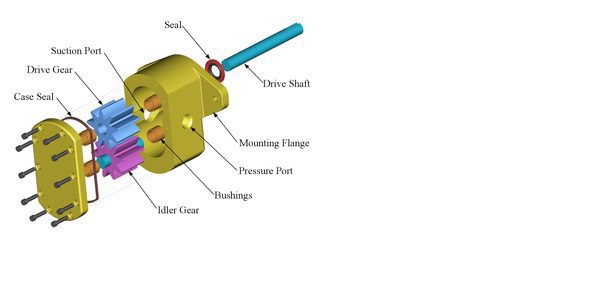When you are creating a patent drawing it is important to follow various rules put forth by the respective patent office. Creating drawings for patents is something that requires meticulous approach and acquaintances with the patent regulatory framework. Unlike, normal kind of drawings, here, we are supposed to follow each and every rule religiously, failing which can make our whole work futile. Even margins and lines used in a patent drawing should be as per the rules. Here, we are going to underline the margins and views in a patent drawing that a draftsperson use.
Margin Requirements and Views in a Patent Drawing:
Margin Requirements in a Patent Drawing: As we discussed earlier, Patent drawing is a domain that requires meticulous approach wherein every element used should be in line with the regulatory norms. And the same goes true for margins as well. There are specific requirements for margins and we need to put margins as described by the respective patent office.
Each sheet of a drawing should have:
- a top margin of at least 2.5 cm. (1 inch)
- a left side margin of at least 2.5 cm. (1 inch)
- a right side margin of at least 1.5 cm. (5/8 inch)
- and a bottom margin of at least 1.0 cm. (3/8 inch)
Thus, we can say that a drawing sheet should be such that it should have a sight no greater than 17.0 cm. by 26.2 cm. on 21.0 cm. by 29.7 cm. (DIN size A4) drawing sheets.
Now comes, the views in a patent drawing those should also be used as per the rules provided by the respective patent office. There are many cases when clients ask how many views should be included in a patent drawing? Speaking broadly, there is no such rule about how many views should be used in a patent drawing. However, as fair patent drawing practice, we should include as many views as possible.
Below are some of the views those we can use in a patent drawing:
Exploded View: Exploded views were used for the first time by Leonardo da Vinci one of the most diversely talented individuals ever to have lived. An exploded view drawing is a diagram, picture, schematic or technical drawing of an object, that shows the relationship or order of assembly of various parts.
Fig: Exploded View of a Gear Pump
Source: Wikipedia
Fig: Cross Sectional View used by Leonardo da Vinci
Source: Wikipedia
Sectional View: A sectional view is used to show the interior construction of an object or in other words we can say is that a cross-sectional view portrays a cut-away portion of the object and is another way to show hidden components in a device. Sections are used to clarify the interior construction of a part that cannot be clearly described by hidden lines in exterior views. By taking an imaginary cut through the object and removing a portion, the inside features may be seen more clearly. Sectional views are generally represented by “Phantom Lines” and these are thin and the types of lines are chosen according to the material of the object. Section lines are generally drawn at a 45° angle.
Some important characteristics of sectional view:
- A section lined area is always completely bounded by a visible outline.
- The section lines in all areas should be parallel
- Section lines shown in opposite directions indicate a different part.
- All the visible edges behind the cutting plane should be shown.
Isometric Views: An Isometric view is one of the most important patent drawing views that are used in patent drawings. An Isometric view can be defined as a pictorial representation of an object in which all three dimensions are drawn at full scale rather than foreshortening them to the true projection is called as Isometric view.
In an isometric drawing, the object’s vertical lines are drawn vertically, and the horizontal lines in the width and depth planes are shown at 30 degrees to the horizontal.
Orthographic View: An Orthogonal view is also called as multi-view wherein an object is presented from all different directions. It is a view which is used to ensure that every detail about the object is presented.

Here you can Download our All free Resources:
Patent Drawing Samples, Guides, E-books, Case-studies, Whitepapers, Approaches, Methodologies, Sample Reports, etc.




